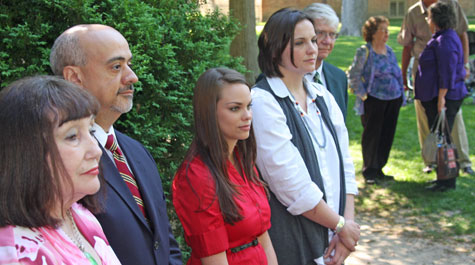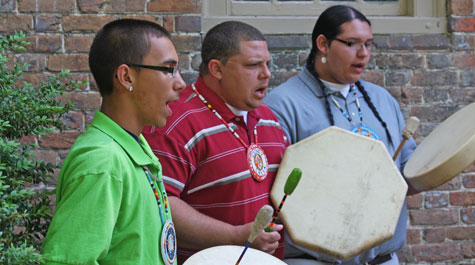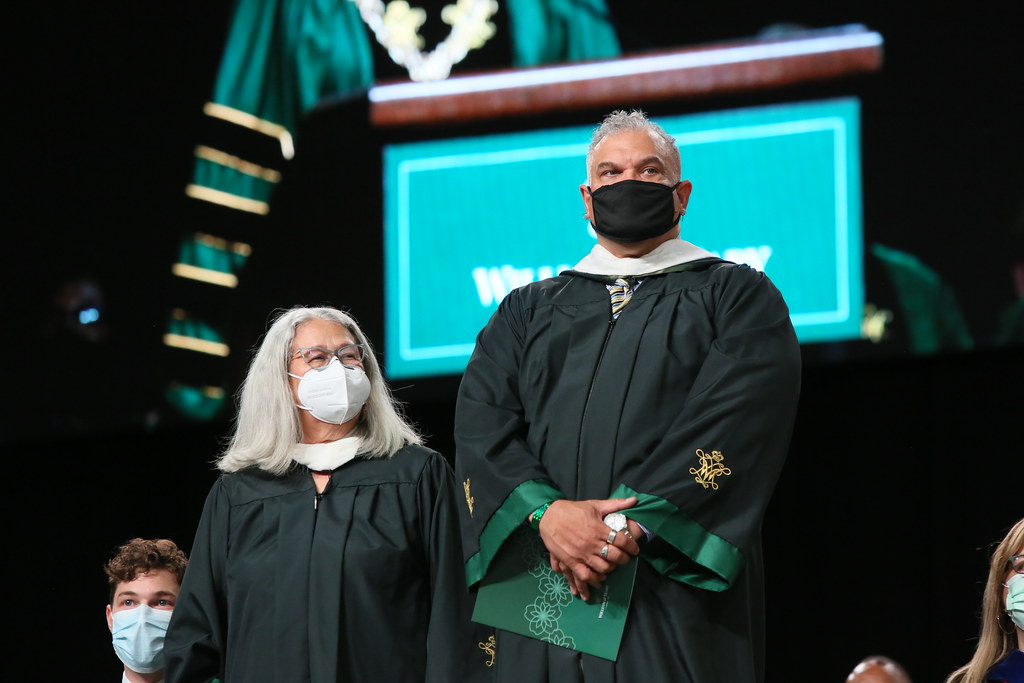The Brafferton Legacy Group & Community Engagement
The Brafferton Indian School operated at William & Mary from c.1700 until 1779. During that time, dozens of Native students attended the institution to learn basic reading, writing, arithmetic, and teachings in Christian divinity. Today, upwards of 50 federal, state, and non-recognized tribes are linked to this historic student body.
In 2010, the Brafferton Legacy Group (BLG) was formed to advise William & Mary and The Colonial Williamsburg Foundation on Native issues associated with planned 2011—2013 archaeological excavations and renovations to the historic Brafferton building. The BLG also assisted with outreach to the Brafferton-affiliated descendant community.
Three criteria were devised for the selection of BLG members, seeking individuals who were:
- Citizens of a Native American tribe
- Alumni of William & Mary
- Affiliated with tribes linked to the historical Brafferton student population

The 2010—2013 BLG consisted of William & Mary alumni Annette Saunooke-Clappsaddle ‘05, from the Eastern Band of Cherokee Indians, Reginald Stewart ‘86, from the Chickahominy Indian Tribe, Ashley Atkins Spivey ‘09, from the Pamunkey Indian Tribe, and Paige Archer ‘78, from the Meherrin Indian Tribe. The Brafferton Legacy Group assisted in organizing a pre-excavation opening ceremony in April of 2011 and participated in a rededication ceremony of the renovated Brafferton Building in September of 2013. At both events, members of the BLG offered public remarks and reflections, alongside the President and Provost. The building was opened to the gathered assemblies while Native singers offered honor songs in remembrance of the Indian students who attended the eighteenth-century school.

In 2015, scholars and Native interlocutors developed plans for an exhibition to showcase over ten years of new Brafferton-related research. The Muscarelle Museum of Art commissioned four Native artists from the Eastern Band of Cherokee Indians, Nottoway Indian Tribe of Virginia, Pamunkey Indian Tribe, and Wyandot Nation of Kansas to create new artworks reflective of their communities. The 2016—2017 Muscarelle exhibition “Building the Brafferton: The Founding, Funding, and Legacy of America’s Indian School” brought together eighteenth-century artifacts, the commissioned Native art, archival documents, historical portraits, and ethnographic objects in a never-before-seen assemblage of colonial and Native American materials for the university, students, and the general public.
In 2016, William & Mary launched a Native Studies minor in the College of Arts and Sciences. As part of the program and concurrent exhibition, the Department of Anthropology offered an undergraduate seminar on the Brafferton Indian School, and the Muscarelle Museum of Art hosted a day-long symposium highlighting new Brafferton-centered academic scholarship and student research. A speaker’s series, in collaboration with The Colonial Williamsburg Foundation, brought Native and non-Native scholars together for a public forum on contemporary Indigenous issues. A Native delegation from the communities of the Delaware Tribe of Eastern Oklahoma, the Seneca-Cayuga Nation, and the Shawnee Tribe hosted an outdoor evening stomp dance featuring Indigenous music and a delicious buffet dinner with fry bread.
The new research on the Brafferton Indian School has re-affirmed the building as a key interpretive site for both the university and the many descendant communities whose histories are linked to the school. While the former Indian School building serves as physical symbol of the former relationship between Native people and Williamsburg, the university seeks to rebuild sustainable relations with the Indigenous communities formerly affiliated with the Brafferton Indian School. The administration, faculty, staff and students are committed to acknowledging the past history of the Indian School on our campus and forging new future.

Further Reading
Moretti-Langholtz. "The Brafferton Indian School: In Memory and Legacy." In Building the Brafferton : the Founding, Funding, and Legacy of America’s Indian School, edited by Danielle Moretti-Langholtz and Buck Woodard, 218-224. Williamsburg, Va: Muscarelle Museum of Art, 2019.














